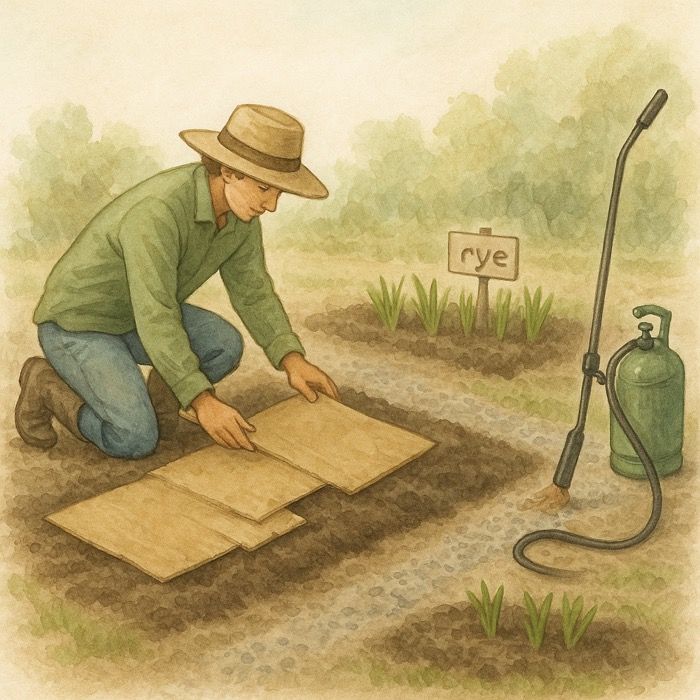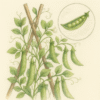Growing Swiss Chard: A Comprehensive Guide
A rainbow in the garden
Introduction
Swiss chard, a versatile and highly nutritious leafy green, is an essential addition to any gardener’s plot, whether you’re a novice or an experienced grower. Its striking, colorful stems—ranging from deep reds to bright yellows and pinks—not only add beauty to your garden but also bring a wealth of flavor and nutrition to your kitchen. Packed with vitamins A, C, and K, as well as essential minerals like magnesium and iron, Swiss chard is a nutritional powerhouse. Its adaptability to various climates and its long growing season make it a reliable and attractive crop choice for anyone seeking to diversify their garden.
This guide will take you through every step of the growing process, from selecting the best variety to planting, caring for your plants, harvesting, and incorporating Swiss chard into your favorite dishes. Follow these guidelines, and you’ll enjoy a productive and rewarding harvest of delicious greens all season long.
Choosing the Right Variety
Selecting the right variety of Swiss chard is the first step toward a successful growing season. Different varieties offer unique qualities such as color, size, and tolerance to different growing conditions. Choosing the right one for your climate and taste preferences will ensure that you enjoy a productive and beautiful crop.
- Rainbow Chard – Known for its stunning, multicolored stems, Rainbow Chard adds a pop of color to any garden bed while providing tender, flavorful leaves that are excellent for cooking.
- Fordhook Giant – A classic variety with large, glossy green leaves and thick white stems, Fordhook Giant is known for its high productivity and ability to adapt to different growing conditions.
- Lucullus – Ideal for warmer climates, Lucullus is a heat-tolerant variety that continues to produce abundant yields in hot weather, making it perfect for summer gardens.
Choosing the right variety based on your climate and culinary preferences will give you the best chance for a thriving garden.
Planting and Care
Planting Swiss chard at the right time and providing proper care are key to ensuring a healthy, productive crop. Swiss chard is easy to grow and is known for its tolerance to a variety of growing conditions, making it a great choice for beginner gardeners. Follow these planting and care instructions for the best results.
- Timing – For optimal growth, plant Swiss chard in early spring or fall. It thrives in cooler temperatures but can tolerate summer heat better than other leafy greens.
- Location – Choose a sunny spot with well-drained soil rich in organic matter. While Swiss chard can tolerate partial shade, full sun encourages stronger, more vigorous growth.
- Spacing – Sow seeds directly into the garden, spacing them 6-12 inches apart in rows that are 18 inches apart. This spacing ensures that the plants have enough room to spread as they mature.
- Depth – Plant seeds about ½ inch deep. If you start seedlings indoors, transplant them when they are 3-4 inches tall, giving them ample room in the garden.
With these planting techniques, your Swiss chard will have a strong start and grow steadily throughout the season.
Master Gardener Tip:To extend Swiss Chard’s growing season and increase yield, try ‘cut and come again’ harvesting. By consistently trimming the outer leaves and leaving the central crown intact, Swiss chard will keep producing fresh leaves throughout the season, even into the cooler months and Winter. For optimal growth, mulch the base to retain moisture and regulate soil temperature, especially during hot summer and early fall days.
Master Gardener Steve
Watering
Proper watering is essential to maintain the health of your Swiss chard plants. Ensuring that the soil is consistently moist will help produce tender leaves and prevent stress on the plants. Here’s how to manage watering effectively.
- Keep the soil consistently moist but avoid overwatering, which can lead to root rot. Swiss chard prefers soil that is neither too dry nor waterlogged.
- Mulching around the plants helps retain moisture in the soil and suppresses weeds, making it easier to maintain consistent moisture levels.
By keeping the soil at an ideal moisture level, you’ll ensure that your Swiss chard grows healthy and flavorful.
Fertilizing
Although Swiss chard is not a heavy feeder, giving your plants a boost of nutrients can help them thrive. Here’s what you need to know about fertilizing Swiss chard for optimal growth.
- Swiss chard benefits from soil rich in organic matter. Incorporate compost or a balanced fertilizer at planting time to give the plants a good start.
- Consider side-dressing with a diluted liquid fertilizer during the growing season to promote strong, steady growth. This is especially useful in nutrient-poor soils.
By providing the right balance of nutrients, your plants will grow stronger, producing more leaves for harvest.
Pest and Disease Control
Like all leafy greens, Swiss chard can be susceptible to pests and diseases. However, with proper management, you can keep these issues under control. Knowing what to look for and how to address problems early on will keep your crop healthy.
- Common pests that may target Swiss chard include aphids, leaf miners, and slugs. Regularly inspect your plants for signs of damage and use organic methods like hand-picking pests, applying row covers, or using natural deterrents like companion planting.
- To avoid soil-borne diseases, practice crop rotation by not planting Swiss chard in the same spot each year. This helps prevent the buildup of pathogens in the soil.
By staying vigilant and using preventive measures, you can enjoy a pest-free and disease-free Swiss chard harvest.
Harvesting and Storage
Harvesting Swiss chard is easy and rewarding, and with proper storage, you can enjoy your harvest for days after picking. Here’s how to ensure you’re getting the most out of your crop.
- Harvesting – You can begin harvesting Swiss chard once the outer leaves are 8-10 inches tall. Use sharp scissors or a knife to cut the stalks near the base, leaving the inner leaves to continue growing for future harvests. This “cut and come again” approach will provide you with a steady supply of fresh greens.
- Storage – After harvesting, Swiss chard can be stored in the refrigerator for up to a week. Place the leaves in a perforated bag to retain moisture while preventing them from getting too wet, which can lead to spoilage.
With proper harvesting and storage techniques, you’ll be able to enjoy Swiss chard throughout the growing season and beyond.
Culinary Uses
Swiss chard is a versatile green that can be used in a variety of dishes. Its mild, slightly earthy flavor makes it an excellent addition to both raw and cooked meals. Here are a few ways to enjoy Swiss chard in your kitchen.
- Salads – Young, tender Swiss chard leaves can be eaten raw in salads, providing a nutrient-dense alternative to spinach or lettuce.
- Sautéed dishes – Lightly sauté Swiss chard with garlic and olive oil for a simple and delicious side dish that pairs well with many main courses.
- Soups and stews – Add Swiss chard to soups and stews for a nutritional boost and to enhance the flavor of your dish.
- Smoothies – Blend Swiss chard into smoothies for an easy way to increase your intake of vitamins and minerals.
- Quiches and omelets – Swiss chard’s tender leaves work beautifully in egg dishes like quiches, omelets, or frittatas.
Its versatility in the kitchen makes Swiss chard a valuable ingredient that can be used in a wide range of meals, from savory to sweet.
Additional Tips
To ensure a continuous and productive Swiss chard harvest, consider these additional tips for success:
- Succession planting – Plant Swiss chard every 2-3 weeks for a continuous harvest throughout the growing season. This staggered planting method ensures you’ll always have fresh leaves ready to pick.
- Winter harvesting – In mild climates, Swiss chard can tolerate light frosts, allowing you to harvest well into the winter. Consider planting a late-season crop for a winter harvest.
- Preserving – To enjoy Swiss chard year-round, preserve it by freezing or canning. Blanching the leaves before freezing will help retain their color and texture.
By following these additional tips, you’ll extend your harvest and be able to enjoy Swiss chard even after the growing season ends.
With these detailed guidelines, you’re well on your way to growing healthy, flavorful Swiss chard that will enrich both your garden and your kitchen. Whether you’re planting it for its vibrant colors, its nutritional benefits, or its culinary versatility, Swiss chard is a rewarding and resilient crop that’s sure to thrive in your garden.
More From Our Master Gardener
Recent Posts

❄️ Snow as Fertilizer – The Truth About “Poor Man’s Nitrogen”

5 Unexpected Winter Weed Control Strategies (That Don’t Involve Mulch)

Harnessing Winter Sun – Passive Solar Tricks for Your Garden

How to Grow Spinach – The Ultimate Beginner’s Guide for Tender, Nutritious Leaves

How to Grow Peas: The Ultimate Beginner’s Guide for Sweet, Crisp Harvests















